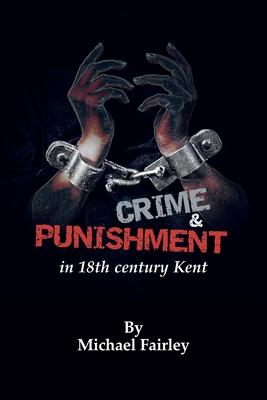Crime of all kinds was a growing problem in Kent, England, during much of the 1700s, whether this was local petty crimes (misdemeanours) such as stealing a loaf of bread, a few apples, a handkerchief, several pairs of stockings or a flat iron, right through to the much more serious crimes (felonies) that ranged from assault, housebreaking and property theft, highway robbery, horse and farm animal stealing, smuggling, poaching, pick-pocketing, manslaughter, poisoning and murder.
The county’s Quarter Sessions and Assizes courts at this time were overburdened with criminal trials and Parliament was desperate to deter any further rise in criminal activities. So much so, that towards the end of the 18th century there were more than 200 crimes in England and Wales that had become punishable by the death penalty which, in Kent, was quite extensively carried out at Penenden Heath, Maidstone, as well as outside Canterbury Gaol. Some 35,000 criminals were sentenced to death in England and Wales (many in Kent) in the 60 years between 1770 and 1830, although only about 20 per cent were actually executed.
New Petty Sessions courts (frequently held in Kent’s public houses) with local magistrates, were introduced in England and Wales in the 1730s to deal with the more minor county crimes, successfully reducing the burden on the county’s high courts and, in turn, the burden on the country’s most senior courts in London. Transportation of convicted criminals to, initially America, and then to Australia ̶ where more than 160,000 were eventually transported ̶ rose significantly, as well as the incarceration of thousands of convicts on prison hulks moored in the Thames and Medway.
The range of punishments given in Kent’s higher courts could be quire brutal and bloody. Apart from hanging, burning of women at the stake was still carried out in the 1700s, while both public and private whipping, standing in the pillory and branding (burning in the hand) were all commonly used punishments in the county.
Research for this book has particularly involved extensive study of old Kent newspaper records from around 1730 onwards - reading the notices announcing court dates and justices, examining reports of crimes committed, convictions and punishments carried out ̶̶ and digesting all this into a more convenient format for those interested in Kent crime and punishment in the 18th century. It was a brutal period in history
| FindBook |
有 1 項符合
Crime & Punishment in 18th century Kent的圖書 |
 |
Crime & Punishment in 18th century Kent 作者:Fairley 出版社:Mifair 出版日期:2023-04-14 語言:英文 規格:平裝 / 156頁 / 23.39 x 15.6 x 0.84 cm / 普通級/ 初版 |
| 圖書館借閱 |
| 國家圖書館 | 全國圖書書目資訊網 | 國立公共資訊圖書館 | 電子書服務平台 | MetaCat 跨館整合查詢 |
| 臺北市立圖書館 | 新北市立圖書館 | 基隆市公共圖書館 | 桃園市立圖書館 | 新竹縣公共圖書館 |
| 苗栗縣立圖書館 | 臺中市立圖書館 | 彰化縣公共圖書館 | 南投縣文化局 | 雲林縣公共圖書館 |
| 嘉義縣圖書館 | 臺南市立圖書館 | 高雄市立圖書館 | 屏東縣公共圖書館 | 宜蘭縣公共圖書館 |
| 花蓮縣文化局 | 臺東縣文化處 |
|
|
圖書介紹 - 資料來源:博客來 評分:
圖書名稱:Crime & Punishment in 18th century Kent
內容簡介
|











